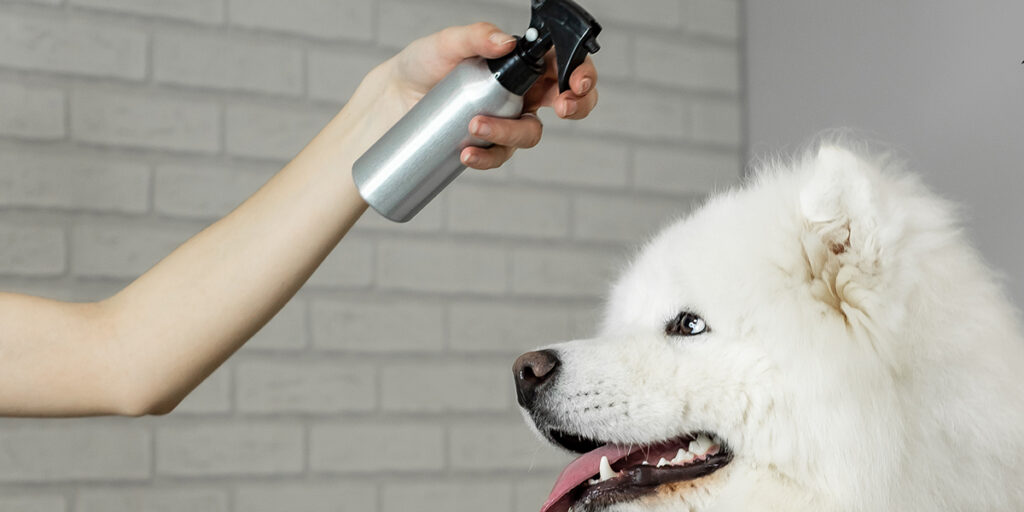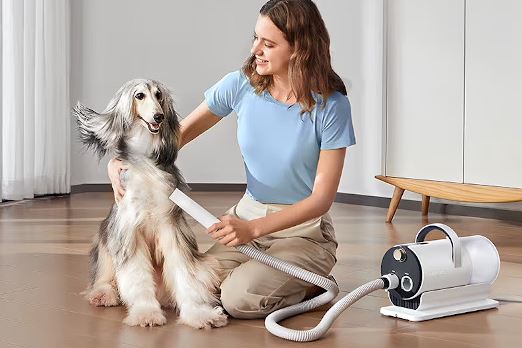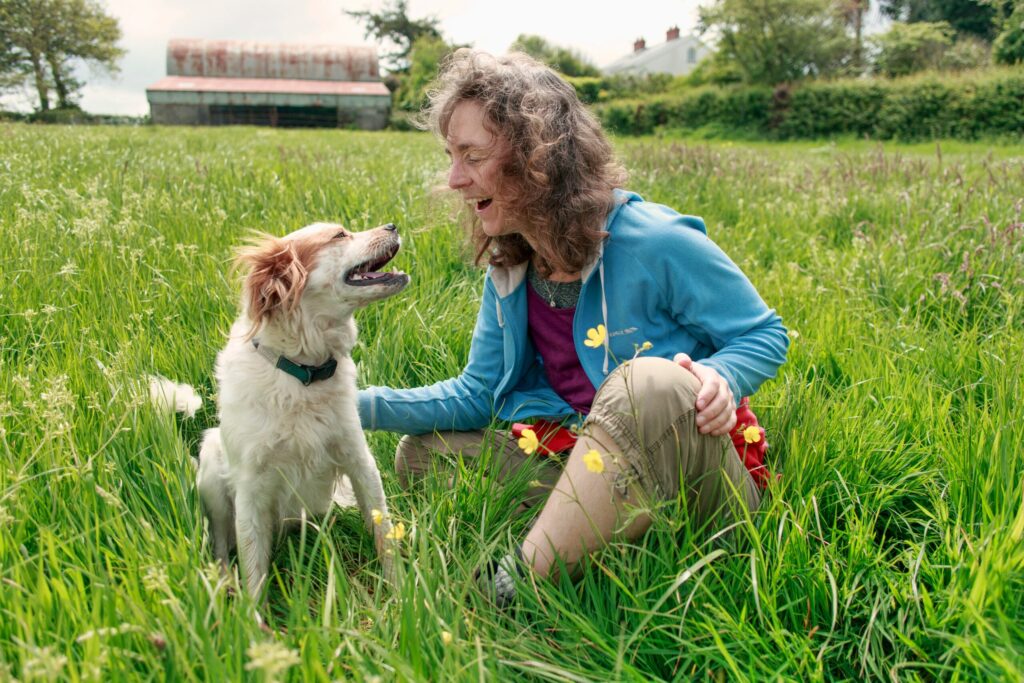
Preventing fleas in your pet is essential. Commercial products also treat ticks, which are a real scourge for animals that go outdoors. At certain times, it is every day that you need to check their entire coat, their ears, their neck, or the places where they manage to cling most easily. Rather than opting for a commercial product based on chemical agents, why not consider concocting your own natural flea control recipe for your dog or cat? Here is the recipe!
Cat and dog: why hunt for fleas and ticks?
We speak of an anti-flea product, but it acts globally on all external parasites, including fleas, but also ticks, lice, and chiggers. These parasites are present all year round in gardens and green spaces, so the animal is likely to be infested whenever it walks outside. Let us focus in particular on fleas and ticks, the most frequently found in the coats of our companions.
How dangerous are fleas?
Fleas are detectable with the naked eye, provided you have a keen eye, because they move very quickly. To hope to see them, you will have to stroke the animal against the grain, mainly at the level of the dorsal column going towards the tail. This is where they prefer to nest. Although it is not easy to see them, it is however quite simple to confirm their presence by the traces they leave behind them. The animal's skin is covered with pink bitesand the hair reveals tiny black grains which are none other than flea droppings.
The most worrying in fleas, it is their ultra-rapid reproduction capacity. In just a few days, the animal can become infested with fleas without the owner realizing it. Flea saliva can cause an allergic reaction in the animal, with severe itching which can lead to unusual behavior (aggression, loss of appetite, etc.). The risk of secondary infection should also not be neglected. They are the cause of certain diseases, such as dermatitis which causes significant hair loss in animals. Let us add that fleas may consider that the animal's back is no longer sufficient space for their entire tribe, and decide to migrate partly onto cushions, sofas, beds, hair, or other surfaces where they will find a favorable environment. to their reproduction. Their eradication then becomes much more complex.
How dangerous are ticks?
Generally, the tick cannot be seen, it can be felt. It is by stroking your pet's hair that you can feel an abnormal lump. The tick bites the cat or dog, and then stays in place, without moving. It grows over time by feeding on the animal's blood.. She will only come off once she is completely satisfied to go lay her eggs. His favorite places? The neck, ears, and stomach, i.e. the areas where the animal's coat is finer, therefore where it is easier to settle down.
Ticks are even more dangerous than fleas. They are vectors of serious or fatal diseases for cats or dogs, such as Lyme disease, which causes fever, fatigue and joint pain. Be careful, humans can catch these diseases from their infected animals. This is why, once spotted and identified, the tick must be removed immediately. To do this, it will be necessary use a tick tweezer, also called a tick puller hook, and nothing else. Removing it with your fingers will only tear off the body of the tick, while leaving the head under the skin of the animal, which can cause inflammation or even empty the tick of its interior which is extremely harmful to health. of the animal. Once removed, the animal's skin must be disinfected and the tick exterminated (ideally burned).
Flea treatment for cats and dogs: how often to renew it?
Between dogs and cats, the frequency of flea treatment differs. In cats, the anti-flea tablet can be given every 12 weeks, and the one in a pipette will need to be renewed every month. In dogs, the treatment will need to be repeated every month, or every two months if the anti-flea treatment is followed by an anti-flea collar, or by long-acting anti-parasitic tablets. We are talking here about preventive treatment. In case of curative need, if fleas are detected on the coat, treatment should be carried out immediately, and the animal's hair should be brushed every day, and several times a day, using an anti-flea comb. .
Anti-flea recipe for dog or cat
Dogs and cats do not always get along, and unsurprisingly, the same will be true for their anti-flea preparation which will be specific depending on the animal. In fact, we will particularly avoid essential oils for the cat. The cat does not have the glucuronyl transferase enzyme, unlike other mammals, such as humans or dogs for example. However, this enzyme is responsible for eliminating phenols and natural toxins from certain plants. If essential oil is applied, the cat could become seriously ill if it comes into contact with its skin, or if it is ingested when washing.
Flea control for dogs
Flea control for dogs may contain essential oils, provided they are used with caution as we know they can be irritating and allergenic. We offer you a simple, natural and effective recipe to prevent fleas and other parasites for your dog. To do this, you will need to have the following ingredients and accessories:
- a spray bottle;
- 250ml of water;
- 4 tablespoons of cider vinegar;
- 10 drops each of lavender, mint, and eucalyptus essential oils.
Unsurprisingly, all you need to do is mix the water and cider vinegar directly in the spray bottle, then add the essential oils by dropper. And here is the homemade anti-flea recipe ready to be applied. Before each application, you will need to stir the mixture well so that the essential oils become homogenous in the preparation.
In preventive treatment, we will focus on one application per week, on the dog's hair as well as on its basket or carpet. Be careful to avoid the ear and eye areas, which will not tolerate cider vinegar well. Once sprayed, the product can be massaged for greater effectiveness. To prevent the dog from licking itself and ingesting the essential oils, you can also spray the preparation on a scarf and tie it around the dog's neck.
In curative treatment, the preparation will be identical, but the application somewhat different. Here, we will apply the mixture to the animal's coat, rubbing with a washcloth. After 10 minutes of letting it act, the dog's hair can be combed using an anti-flea comb, which will be systematically dipped back into a bowl of cider vinegar. The dog will then be rinsed with lukewarm water, and this operation will be repeated a week later. Finally, we reiterate again the importance of scrupulous compliance with the aforementioned dosages, particularly those of essential oils.
Anti-flea for cats
Here is a recipe for flea treatment for cats, very simple to make, effective, and completely natural, made from plants only. To do this, we will gather a salad bowl and a bowl, a fine strainer, a kettle and a spray bottle. In addition to the accessories, we will therefore add the following ingredients:
- rosemary : in addition to strengthening the cat's hair, it is recognized for its antiseptic action;
- lavender flowers : here is the smell of lavender, which the cat can tolerate, which on the other hand will be a perfect repellent against fleas. Even better, lavender works to relax the cat;
- sweet mint leaves : natural anti-pest, mint acts on all parasites;
- lemon verbena : through its antifungal properties, it relieves the pain linked to bites if fleas are present in the animal's coat.
Ideally, these aromatic herbs will be picked fresh, from your vegetable garden or in the store. It will be necessary to ensure that they come from organic farming, which should remain easy to find for herbs. The idea is obviously to limit the cat's exposure to pesticides. Otherwise, it is also possible to use these dried plants.
Making the anti-flea preparation for cats
The principle of the recipe? Neither more nor less than an infusion. All you have to do is fill the bowl with water and boil it in a kettle. In the salad bowl, place a handful of each plant, which we will cover with boiling water to let it infuse then cool. The leaves will then be removed, and the broth can be poured into the vaporizer. The anti-flea preparation is ready, without any preservatives, without any chemicals, and without any aggressive product for the cat or for humans. Only parasites will be repelled.
Be careful though, because it does not contain any preservative, the preparation will need to be kept for a maximum of 15 days, hence the benefit of only concocting a bowl of herbal tea. Once the mixture has been applied to the animal, the rest of the preparation can be sprayed on surfaces in contact with the cat, such as cushions, sofas, etc.
How often to treat the cat?
All you need to do is spray the preparation on the cat's coat, sprinkled with sprinkles. The animal can lick itself without this being dangerous to its health. Its application once a month is sufficient as a preventive treatment. On the other hand, as a curative treatment, it will be better to apply it every day to the animal's hair and to the areas in contact until the fleas disappear, then once a week for 1 month.
Can you make a preventative flea collar yourself?
Why consider making your pet's flea collar yourself? Well, because commercial antiparasitic collars are loaded with active substances that are very harmful to humans. Ideally, it is better not to touch them, especially in the presence of young children who could then put their fingers in their mouths. However, even as an adult, it is very difficult to never touch the dog or cat's collar. This is why making your own flea collar with natural products is preferable. But be careful, here again, the recipe for dogs will not be suitable for cats. The one presented is for an antiparasitic collar for dogs. The cat will not tolerate Tea tree essential oil, much too strong for its fine sense of smell, and much too dangerous for its health.
To prepare the dog's natural flea collar, you will first need to equip yourself with a standard fabric collar. The material is important since the fibers of the fabric must be porous to be able to be impregnated. You will then need to prepare a mixture with 2 tablespoons of sweet almond, 5 drops of tea tree essential oil, and 5 other drops of lavender essential oil. Once the mixture is ready and homogeneous, we will dip the necklace in it until it is well soaked. It will then be left to dry for a good day, and it can be put around the dog's neck.




